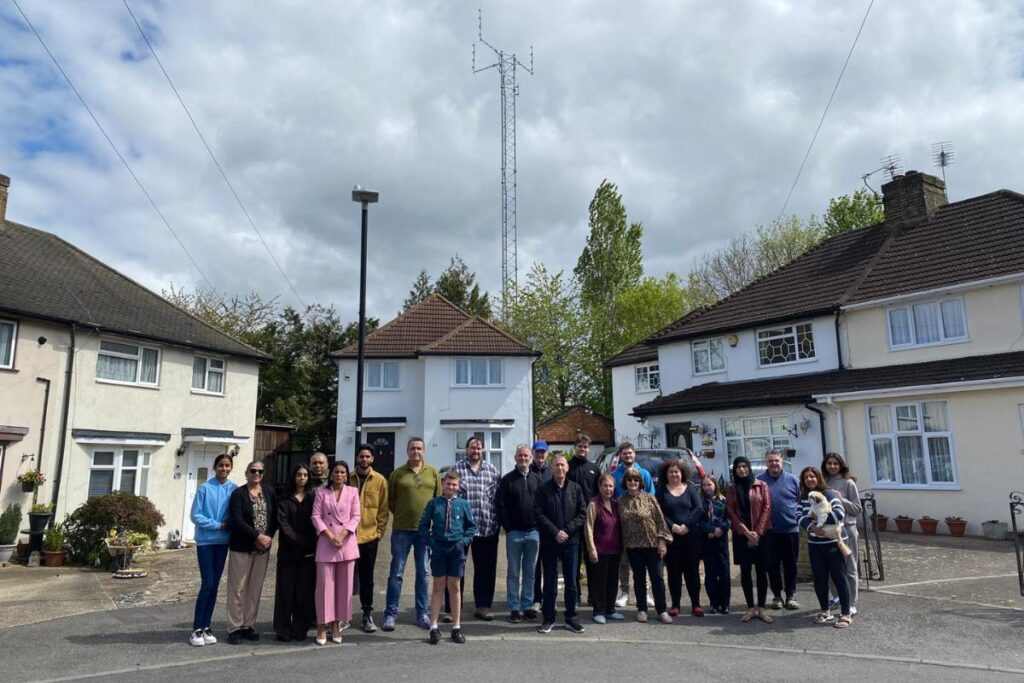From artisanal crepes to rebellious cheesecake waffles, Reading's breakfast rebels are transforming morning meals. These seven spots will revolutionize how you start your day.
Controversial Telecoms Mast Faces Uncertain Future in Slough
A contentious telecoms mast in Slough has become the center of attention as local authorities grapple with its potential replacement. The Slough Borough Council finds itself in a challenging position, unable to make a definitive ruling on the future of this controversial structure.

Planning Decisions in the Spotlight
This week's roundup of planning applications and decisions from both Slough Borough Council and the Royal Borough of Windsor and Maidenhead highlights the ongoing debate surrounding telecommunications infrastructure. The situation has drawn significant interest from residents, particularly those in Ivy Crescent, who have actively campaigned for the removal of the existing mast.
Balancing Progress and Community Concerns
As the council navigates this complex issue, the story underscores the delicate balance between technological advancement and community preferences. The outcome of this decision could set a precedent for how similar cases are handled in the future, making it a focal point for both local residents and industry observers alike.
Council's Dilemma on Telecoms Mast Replacement
Slough Borough Council finds itself in a challenging position regarding the controversial telecoms mast in Ivy Crescent. The council has stated that it cannot make a ruling on the replacement of the existing structure, highlighting the complexities surrounding telecommunications infrastructure decisions.
Residents of Ivy Crescent have been actively campaigning for the removal of the current mast, demonstrating the strong community sentiment against its presence. This local opposition has placed additional pressure on the council to find a solution that addresses both technological needs and community concerns.
Planning Applications and Decisions in Focus
The telecoms mast issue is part of a broader roundup of planning applications and decisions being considered by both Slough Borough Council and the Royal Borough of Windsor and Maidenhead. This week's review includes not only the contentious mast but also proposals for a new office building, showcasing the diverse range of development projects under scrutiny in the area.
The inclusion of the mast replacement in this roundup underscores its significance within the local planning landscape. It also illustrates the ongoing challenges faced by local authorities in balancing infrastructure development with community preferences.
Implications for Future Infrastructure Decisions
The outcome of this particular case could have far-reaching implications for how similar situations are handled in the future. As telecommunications technology continues to advance, the need for supporting infrastructure is likely to grow. This decision may set a precedent for how councils navigate the delicate balance between technological progress and community wishes.
The situation in Slough is being closely watched by both local residents and industry observers. The council's approach to this issue could influence how other local authorities deal with similar challenges in their jurisdictions, making it a potentially landmark case in the realm of local planning and telecommunications infrastructure.
Community Engagement and Technological Progress
The active involvement of Ivy Crescent residents in campaigning against the mast highlights the importance of community engagement in local planning decisions. Their efforts have brought significant attention to the issue, forcing the council to carefully consider the impact of telecommunications infrastructure on residential areas.
As the council grapples with this decision, it must weigh the benefits of improved telecommunications capabilities against the concerns of local residents. This balancing act is emblematic of the broader challenges faced by local authorities in an era of rapid technological advancement and increasing community awareness.
The Broader Impact on Local Planning
The Slough telecoms mast controversy exemplifies the evolving landscape of local planning decisions in the face of technological advancement. As communities become more engaged and vocal about infrastructure projects in their neighborhoods, local authorities are increasingly tasked with finding innovative solutions that satisfy multiple stakeholders.
This case highlights the need for a more collaborative approach to urban planning, where residents, technology providers, and local governments work together to find mutually beneficial solutions. The outcome in Slough could inspire new models of community consultation and decision-making processes for similar projects across the UK.
Technological Necessity vs. Community Well-being
The dilemma faced by Slough Borough Council reflects a broader societal challenge: balancing the imperative of technological progress with the preservation of community character and well-being. As the demand for faster and more reliable telecommunications services grows, so does the need for supporting infrastructure. However, this case demonstrates that such development cannot occur in isolation from community concerns.
The council's inability to make a definitive ruling underscores the complexity of these decisions. It raises questions about the criteria used to evaluate the necessity and impact of telecommunications infrastructure, and whether current planning frameworks are adequately equipped to address these modern challenges.
Potential for Policy Innovation
The Slough case presents an opportunity for policy innovation in the realm of urban planning and telecommunications infrastructure. As local authorities grapple with similar issues across the country, there is potential for the development of new guidelines or best practices that better incorporate community input into the planning process for essential technological infrastructure.
This situation could catalyse discussions about alternative designs for telecoms masts that are less visually intrusive, or explore options for shared infrastructure that could reduce the overall number of masts required in residential areas. Such innovations could help bridge the gap between technological needs and community preferences, paving the way for more harmonious urban development in the future.
